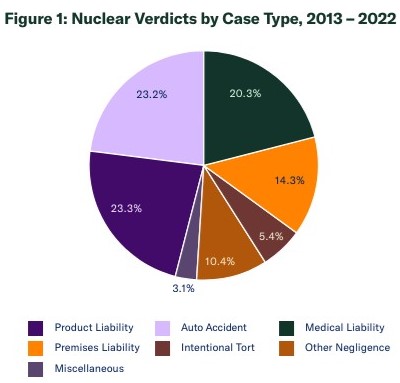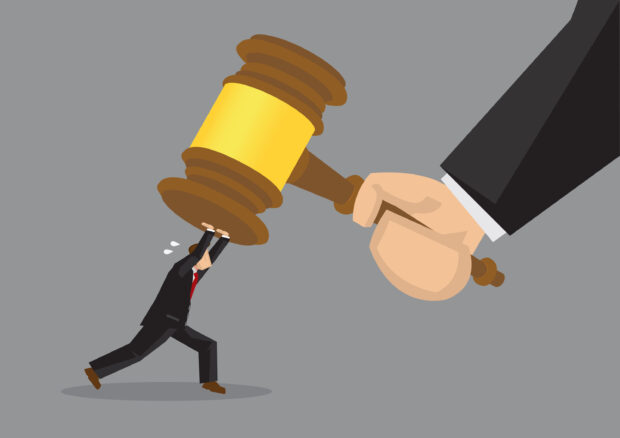A recent report from The U.S. Chamber of Commerce Institute for Legal Reform (ILR) has found that nuclear verdicts of $10 million or more are on the rise.
Looking at verdicts from 2013 to 2022, ILR said the median nuclear verdict was $21 million. The average nuclear verdict during this time was $89 million, according to Nuclear Verdicts: An Update on Trends, Causes, and Solutions.
“Nuclear verdicts are increasingly the new normal in jury awards, and the data shows that these awards are becoming entrenched. It’s time to address this problem before it gets worse,” said Oriana Senatore, senior vice president of research and strategic development at the Chamber’s Institute for Legal Reform. “Most people may not realize that nuclear verdicts affect almost everything, from the prices of common household products to availability and affordability of insurance.”
The research found that about half of all nuclear verdicts were between $10 million and $20 million, and about a third were between $20 million and $50 million. Nineteen percent of these verdicts were above $50 million—including what ILS called “mega” nuclear verdicts of $100 million, which affected the mean.
ILR said large, mega awards have become more common since the previous study released in 2022, looking at years 2010-2019. The mean during the last report period was $76 million.
“There were a record number of mega nuclear verdicts in 2022, which preliminary data indicates was again broken in 2023,” ILR said. In another recent report, research firm Marathon Strategies said nuclear verdicts of at least $10 million reached a 15-year high in 2023, while 27 verdicts were more than $100 million.
Product liability, auto accident and medical liability accounted for two-thirds of reported nuclear verdicts. ILR said that for product liability, the median nuclear verdict was $36 million in 2022—a 50 percent increase over the last decade. These cases included allegations related to talcum powder products, herbicides, automobiles, pelvic mesh implants, earplugs and exposure to polychlorinated biphenyls (PCBs).

ILR said state courts doled out the majority of nuclear verdicts, and although some decisions do not include a breakdown of damages, ILR concluded from the information available that most nuclear verdicts consist of subjective assessments of noneconomic damages—pain and suffering.
“Nuclear verdicts can threaten the viability of a business or the availability of a needed product, or create insurability problems for an entire industry,” ILR said in the report. “For example, due in large part to nuclear verdicts, fewer companies offer insurance to commercial trucking companies and the cost has led many independent businesses to stop operating.”





















 Better Results Ahead? Technology Improvements in Commercial Fleets
Better Results Ahead? Technology Improvements in Commercial Fleets  No Insurance Needed, Amish Quickly Repair Tornado Damage in Michigan and Indiana
No Insurance Needed, Amish Quickly Repair Tornado Damage in Michigan and Indiana  Performance Review: Why Insurers Struggle to Underwrite, Price and Reserve for Commercial Auto Risks
Performance Review: Why Insurers Struggle to Underwrite, Price and Reserve for Commercial Auto Risks  Insurance Industry Contemplates Knock-On Effect of Tariffs to Claims, Consumers
Insurance Industry Contemplates Knock-On Effect of Tariffs to Claims, Consumers 






